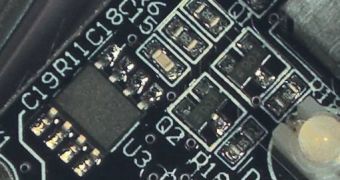Undoubtedly, one of the innovations that will make the computers and electronics of tomorrow run faster and better will consist of printed circuits. Experts have already devised organic circuits that are cheap, efficient and printable, but the trouble is that, unlike their inorganic counterparts, they require two materials in order to be constructed, rather than just silicon. This need has held back the industry for a while, but now new production methods have brought organic circuits back in the spotlight.
In average organic circuits, two materials need to be carefully placed on top of each other, and then patterned in such a way that a circuit would appear. The delicate nature of the process lifts construction costs through the roof, making inorganic circuits remain the product of choice for the electronics industry. In the new method, the need for the two different components is cast aside. Instead, the science team uses a new type of polymer, which can act like both of the usual materials. Using the polymer, experts were able to create some of the fastest and cheapest inorganic circuits to date.
In order to use transistors inside electronics, ranging from mobile phones to laptops and PDAs, the components need to have regions that can conduct both positive and negative charges. But the issue was, until now, that polymers could only be made to carry either one of the two, but not both at the same time.
“When you have two materials requiring complex patterning processes, you lose or reduce the cost advantage and simplicity of organic circuits. The ultimate [goal] is to have one material that can transport electrons and [positive charges],” University of Washington in Seattle Professor of Chemistry Samson Jenekhe explains. Working together with colleague Mark Watson, who is an associate professor of chemistry at the University of Kentucky in Lexington, he managed to create such a material, which was dubbed an ambipolar polymer.
In a new scientific paper published in the latest issue of the respected journal Advanced Materials, the experts show how their ambipolar polymer is not only able to carry both electrons and positive charges, but that it can do this a whole lot faster than any other existing constructs of the same sort. Given the fact that the rate at which these charges move through the polymer is essential to circuit speeds, it stands to reason that the material is among the most efficient ones, Technology Review reports.
Jenekhe also believes that the ambipolar polymers could be used to construct more efficient solar cells, which could more efficiently convert light into electricity. The new polymers could replace the two that are currently part of solar cell basic design. If the latter are not carefully aligned, electrons won't flow between them, which renders the entire setup useless. The researcher believes that the new, printable design could help circumvent this issue.

 14 DAY TRIAL //
14 DAY TRIAL //